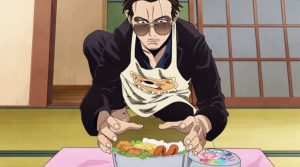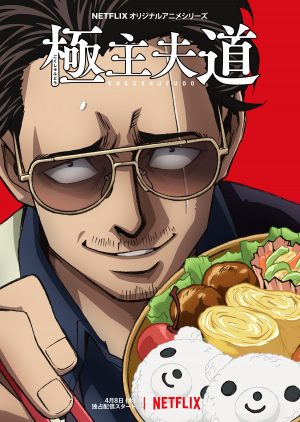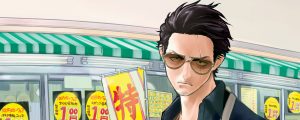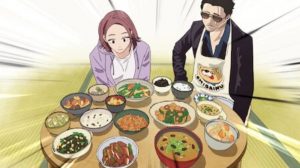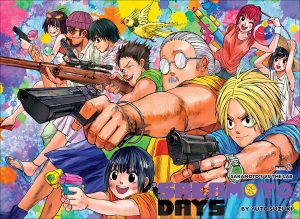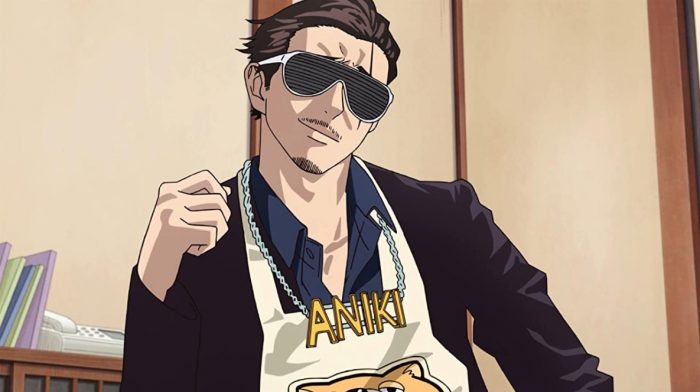
A lot of us will remember having stumbled upon a hilarious manga about a yakuza-turned-househusband’s peaceful yet eventful daily life. Gokushufudou (The Way of the Househusband) has been running since 2018, spanning seven volumes. When the announcement for the anime was made, fans everywhere were excited to see one of the funniest manga titles in recent times make it to our screens. Soon after it dropped on Netflix; however, excitement turned into outrage when the animation was quoted by many to be “bad”, a “PowerPoint presentation”, among other comments.
Many platforms have taken to the narrative of Gokushufudou’s “bad” animation; however, if you know a little more about anime than the next person, you’ll realise why the outrage is uncalled for, and if you do a little research, you’ll come to understand why Gokushufudou’s animation is not only good, but the perfect way to elevate THIS story. Now, before you start foaming at the mouth, here is why Gokushufudou the anime is brilliant and deserves the renewal it’s getting at Netflix.
Boss, What About Genres??
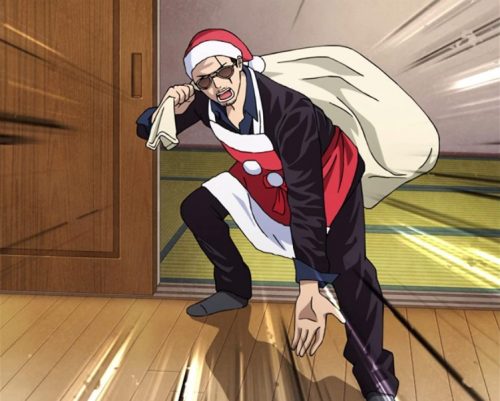
Anime very obviously has several genres, niches, and communities. Gokushufudou is the prime example of a gag title, meaning that it is a comedy built on recurring jokes and premises. We’ve seen gag anime throughout the ages, notable ones include Sazae-san, Gintama, Azumanga Daioh, Nichijou, Poputepipikku (Pop Team Epic), Inferno Cop, Saiki Kusuo no Ψ-nan (The Disastrous Life of Saiki K.), Aggretsuko, Danshi Koukousei no Nichijou (Daily Lives of High School Boys) and many, many more. Gag anime also tend to have short episodes either packed into one full 23-minute run, or they simply present the short episodes as is. Runtime can vary from as little as three minutes (see Danna ga Nani wo Itteiru ka Wakaranai Ken (I Can’t Understand What My Husband Is Saying), to the just under twenty-minute episodes we get with Gokushufudou.
The main gag of Gokushufudou is the contrast between Tatsu’s old life as the most feared gangster to his life as just some guy trying to live a good life and support his working wife, Miku. Tatsu’s obvious lack of socialization in ways contrary to that of a gangster make every situation he’s in seem like something out of an organized crime flick, but no matter how violent or foreboding the setup of a gag may be, Gokushufudou will always fall back onto the fact that Tatsu has turned away from such a life.
Tatsu’s interactions with his former comrades, enemies, and associates are caked in heavy “gangsterisms” and it is the intent of the show to set things up to align with Tatsu’s yakuza past. However, the biggest part of the hilarity of this title is how Tatsu seems like a fish out of water in his normal life, but either lacks the common sense or intuition to notice how his presence is perceived by the people around him. The scenarios may differ, but ultimately the humour is brought on by a combination of the specific situation, as well as Tatsu’s gangster past putting a unique twist onto every single thing he does and nearly every interaction he has.
But Boss, What About Aesthetics?
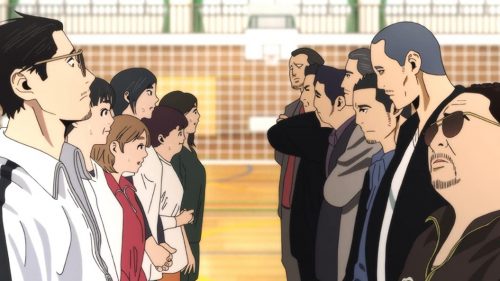
The point of getting into what gag anime are and some examples of them is to illustrate very clearly how there is a huge variety when it comes to the expression of gag manga and anime. Many gag anime are the adaptations of 4-koma manga, which are manga-like comic strips that read from top to bottom. They’re called 4-koma (“yon-koma”) because there are quite often only four panels in these strips. Gag manga are not specifically in 4-koma format; however, a lot of the slice of life, comedy, and gag anime we know and love were adaptations of 4-koma manga.
Aesthetically, 4-koma manga is dramatically different from other manga; however, no one questions the quality of the art because the whole point is the banter and jokes, not the visuals. This brings us back to Gokushufudou, a gag manga with great art and great jokes. The expectation was for the anime to reflect the clean art style found in the manga, which it actually does very well. The stills of Gokushufudou look great because the adaptation was dedicated to making the art reflect the manga as well as possible. The issue people have with “animation” is a strange one because of several things.
For starters, Gokushufudou’s anime adaptation was marketed in Japan as a “motion manga” or “vomic” (voiced comic), but it was marketed to the west as an “anime”. Truth be told, this distinction is unnecessary considering that “anime” very broadly covers shows of this nature. 2020’s Winter season saw the anime adaptation of Jibaku Shounen Hanako-kun (Toilet-Bound Hanako-kun), which was lauded for its immense beauty but even something as gorgeous as that made use of techniques akin to the aforementioned motion manga. The other thing that makes the harsh critiques even stranger is the fact that other shows have been praised despite having very similar, or even lower “quality” in the departments of art and animation and it wasn’t a total travesty.
Boss, Haven’t We Seen This Before?
Inferno Cop (2012) is yet another Original Net Animation like Gokushufudou. With its crass action and comedy, Inferno Cop was quite successful and had an audience that celebrated the show for what it is. The reason why we bring this up is because, just like Gokushufudou, Inferno Cop has an animation style that is not mainstream, at least for anime, yet because of its visuals, it is one of the most notable gag anime we had last decade. The show literally had still characters whose mouths didn’t move, ridiculous voice acting, a strange, comic-esque style and because the entire thing is meant to be banter on the verge of parody, the animation is perfect for the series. The fact is, Gokushufudou isn’t doing anything we haven’t already seen, enjoyed, and praised. 2018 saw the meteoric rise of Poputepipikku (Pop Team Epic), an absurdist comedy about the main characters’ attempts to try out various genres, settings, and stories to see what works and what doesn’t with the goal being to become a real anime. The show is totally ridiculous and has inconsistent art, yet it was one of 2018’s hits.
The expectation that a slice of life gag manga is adapted into a Jujutsu Kaisen is just a manifestation of the sheer lack of understanding of the variety you can find in anime, as well as an inability to grasp the idea that gags often have a visual element. The story of Gokushufudou is built on layers of ridiculousness and misunderstandings of social and visual cues. Anime fans complained about the animation of MAPPA’s Shingeki no Kyojin (Attack on Titan) The Final Season because it didn’t look like the WIT Studio production; however, fans were quick to call it “bad” animation simply because it didn’t look like what they wanted it to look like.
The same people are fans of titles like Nanatsu no Taizai (The Seven Deadly Sins) and Black Clover, which are both anime that are reliant on battles, supernatural abilities, and otherworldly character designs—things which require fluid and pleasing art and animation—yet could never consistently deliver on that. Expecting battle Shounen-esque animation from a gag manga about a former yakuza who can’t buy flour at the shops without it sounding like a drug deal is quite simply another manifestation of the fragility of the impish, entitled modern-day anime fan who has not quite engaged with the medium enough to have an understanding of most of the things that they criticize.
Final Thoughts

“Animation” is the new “character development” in that fans sprinkle it around like parsley to sound like they pay attention to more than just aesthetics. Not even Ex-Arm or Gibiate got the amount of flack that Gokushufudou is getting for using uncommon techniques. For the sake of the series, we might even argue that the shuffling, panning, and movement in Gokushufudou are key to the visual expression of the title’s humour and how it isn’t supposed to be taken seriously. Coupled together with the good voice cast and sound effects, Gokushufudou is an adaptation true to its source and should be watched for more than 10 seconds at a time for someone to really get that. It not being your cup of tea doesn’t make it bad – it just means you haven’t seen anything else like it. Our advice? Diversify your anime watching habits and see how broad your favourite medium really is –watch more anime. What did you think about Gokushufudou? Drop a comment below and let the turf war begin!
Recommended Post
Gokushufudou (The Way of the Househusband)
Recommended Post


